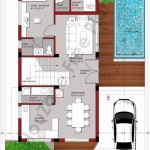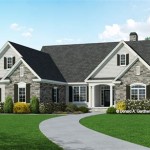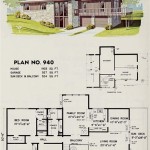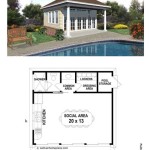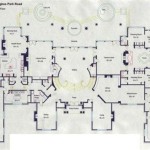Essential Considerations for House Floor Plans on Sloping Lots
Designing a house floor plan for a sloping lot requires careful planning and consideration of numerous factors. Here are some essential aspects to keep in mind:
1. Site Analysis and Slope Assessment:
Thoroughly analyze the site's topography, including the slope angle, elevation changes, and soil conditions. Determine the most suitable building envelope and orientation to maximize views and minimize grading costs.
2. Terracing and Site Grading:
Depending on the slope, terracing may be necessary to create level building areas. Plan for proper drainage and erosion control measures to ensure stability and prevent water damage. Consider retaining walls or slopes to support the terraces.
3. Building Orientation and Floor Plan Layout:
The house orientation should capitalize on the slope's advantages and mitigate potential drawbacks. Position rooms with higher usage on the lower levels for easy access and consider using split-level floor plans to accommodate elevation changes.
4. Basement and Foundation Considerations:
Sloping lots may offer opportunities for basements or walkout basements. However, it's crucial to assess the soil conditions, groundwater levels, and potential for flooding before deciding on a basement. Proper waterproofing and drainage systems are essential.
5. Accessibility and Connectivity:
Plan for accessible pathways and entries to different levels of the house. Utilize stairs, ramps, or elevators to ensure convenient movement throughout the home. Consider the impact of steps and slopes on the overall flow and functionality.
6. Natural Light and Ventilation:
Maximize natural light by strategically placing windows and skylights. Design the floor plan to enhance cross-ventilation and airflow. The slope can provide opportunities for unique window placement and views.
7. Outdoor Living Spaces:
Incorporate outdoor living spaces into the design to take advantage of the slope's potential. Create terraces, decks, patios, or gardens that offer stunning views and connect seamlessly with the interior.
8. Landscaping and Hardscaping:
Landscaping and hardscaping play a pivotal role in complementing the house floor plan on a sloping lot. Utilize native plants, boulders, and pathways to enhance the visual appeal and create a cohesive outdoor environment.
9. Structural Design and Engineering:
The structural design should account for the slope's challenges. Consider using appropriate foundation systems, framing techniques, and retaining walls to ensure stability and durability. Collaborate with experienced engineers to develop a sound structural plan.
10. Water Management and Drainage:
Effective water management is paramount on sloping lots. Install proper drainage systems, including downspouts, gutters, and dry wells, to prevent water accumulation and erosion. Consider permeable paving or rain gardens to reduce stormwater runoff.
By carefully considering these essential aspects, homeowners can design functional, aesthetically pleasing, and sustainable house floor plans on sloping lots that take full advantage of the unique terrain.
A Guide To Sloping Lot House Plans

Plan 64452sc House For A Rear Sloping Lot Façade Maison Moderne Plans D étage Cottage Rustique

Plan 80780pm 2 Bed Modern House For Sloping Lot Plans Design

Plan 51696 Traditional Hillside Home With 1736 Sq Ft 3 Be

House Plans For A Sloped Lot Dfd Blog

2 Bedroom Hillside Home Plans With Great Rear Side Views Sloping Lot House Plan Split Level Floor

Best Simple Sloped Lot House Plans And Hillside Cottage

Silver Sloping Lot Modern House Plan Mm 2618

Plan 290025iy Modern House For A Sloping Lot Architectural Design Plans

Best Simple Sloped Lot House Plans And Hillside Cottage

